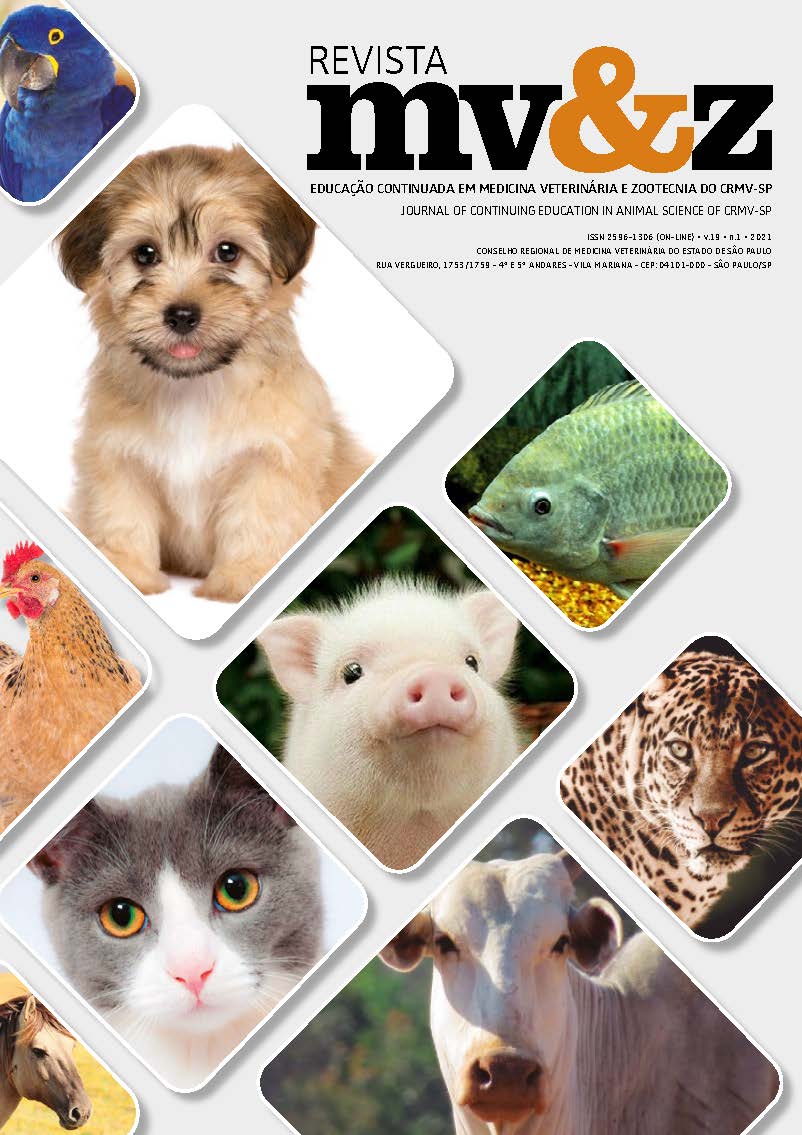Aspectos clínicos e etiológicos da alopecia X em cães
Conteúdo do artigo principal
Resumo
A alopecia X ou “aprisionamento do folículo piloso” é uma dermatopatia frequente em consultas dermatológicas veterinárias, caracterizada por um conjunto de manifestações cutâneas como a perda de pelame. Sua etiologia permanece desconhecida até os dias atuais, o que justifica a sua denominação. A suspeita é de que seja uma enfermidade de caráter hereditário, sendo interessante observar que, em áreas de trauma ou biópsia, ocorre recrescimento piloso. Acomete tanto fêmeas quanto machos, tendo predileção por machos não castrados entre um a cinco anos de idade. Atinge principalmente raças nórdicas como, por exemplo, o spitz alemão, malamute do Alasca, husky siberiano e samoieda. Pode estar relacionada a alterações endócrinas e vir acompanhada de doenças secundárias, devido à perda de proteção oferecida pela pelagem. O principal sinal clínico é a queda de pelos não inflamatória, bilateral e simétrica, pelo seco, sem brilho e com aspecto de lã, além de melanodermia e outras alterações inespecíficas. O diagnóstico pode ser dado a partir da resposta do paciente frente ao tratamento instituído. A castração dos animais acometidos é a terapia mais empregada atualmente. O médico-veterinário deve estar a par da ocorrência, sinais clínicos e tratamento dessa afecção, de maneira a orientar os tutores de forma correta. O objetivo do trabalho foi contribuir para o entendimento da alopecia X reunindo informações pertinentes.
Detalhes do artigo
Seção
1. Autores mantém os direitos autorais e concedem à revista o direito de primeira publicação, com o trabalho licenciado sob a Creative Commons Atribuição-NãoComercial-SemDerivações 4.0 Internacional
2. Autores têm autorização para assumir contratos adicionais separadamente, para distribuição não-exclusica da versão do trabalho publicada nesta revista (ex.: publicar em repositório institucional ou como capítulo de livro), com reconhecimento de autoria e publicação inicial nesta revista.
3. Autores têm permissão e são estimulados a publicar e distribuir seu trabalho online (ex.: em repositórios instituicionais ou na sua página pessoal) a qualquer ponto antes ou durante o processo editorial, já que isso pode gerar alterações produtivas, bem como aumentar o impacto e a citação do trabalho publicado (Veja O Efeito do Acesso Livre);
